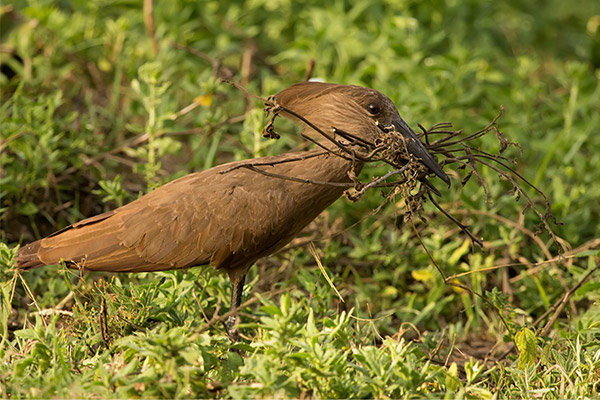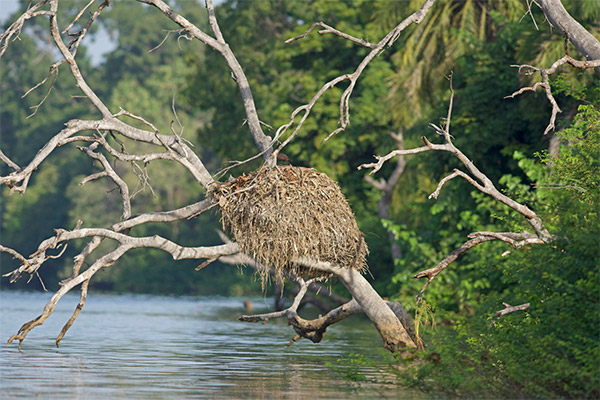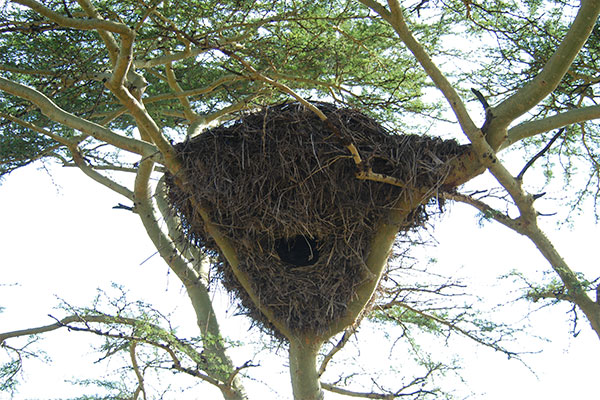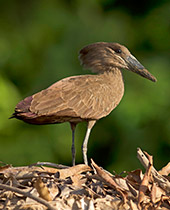
Hammerkop with Nesting Material
© Sumeet Moghe
© Sumeet Moghe
The Hamerkop in the thumbnail above stands about 50 cm tall and I photographed it as it perched on the nest in the photo below, taken along the River Gambia in west Africa. Can you spot it on top of the nest? It's the dark brown spot just above the heap at top centre (the bird is there).

The great heaps that Hamerkops build aren't simply unorganized jumbles of sticks, however, and the birds aren’t nesting on top of the heaps, either. The heap conceals a nesting chamber within, and the birds access the chamber through a passage leading up from the heap’s lower rim. Inside the pair will have 3 – 6 eggs. This nest design might seem like overkill but this design plus its placement typically over water assures the pair can rear its chicks in relative security. This structure is the largest enclosed nest created for use by a single pair of birds!

Hamerkop nest showing entrance
© Chris Earley
© Chris Earley
Where can you find the Hamerkop and have a chance of seeing its stupendous nest? You could join one of these Quest Nature Tours group tours:
The Gambia
South Africa
Tanzania
Ethiopia
Namibia
Or, enjoy one of our Private Journeys:
Kenya
Uganda
Zambia
Please be in touch to discover bird life and so much more in Africa!



